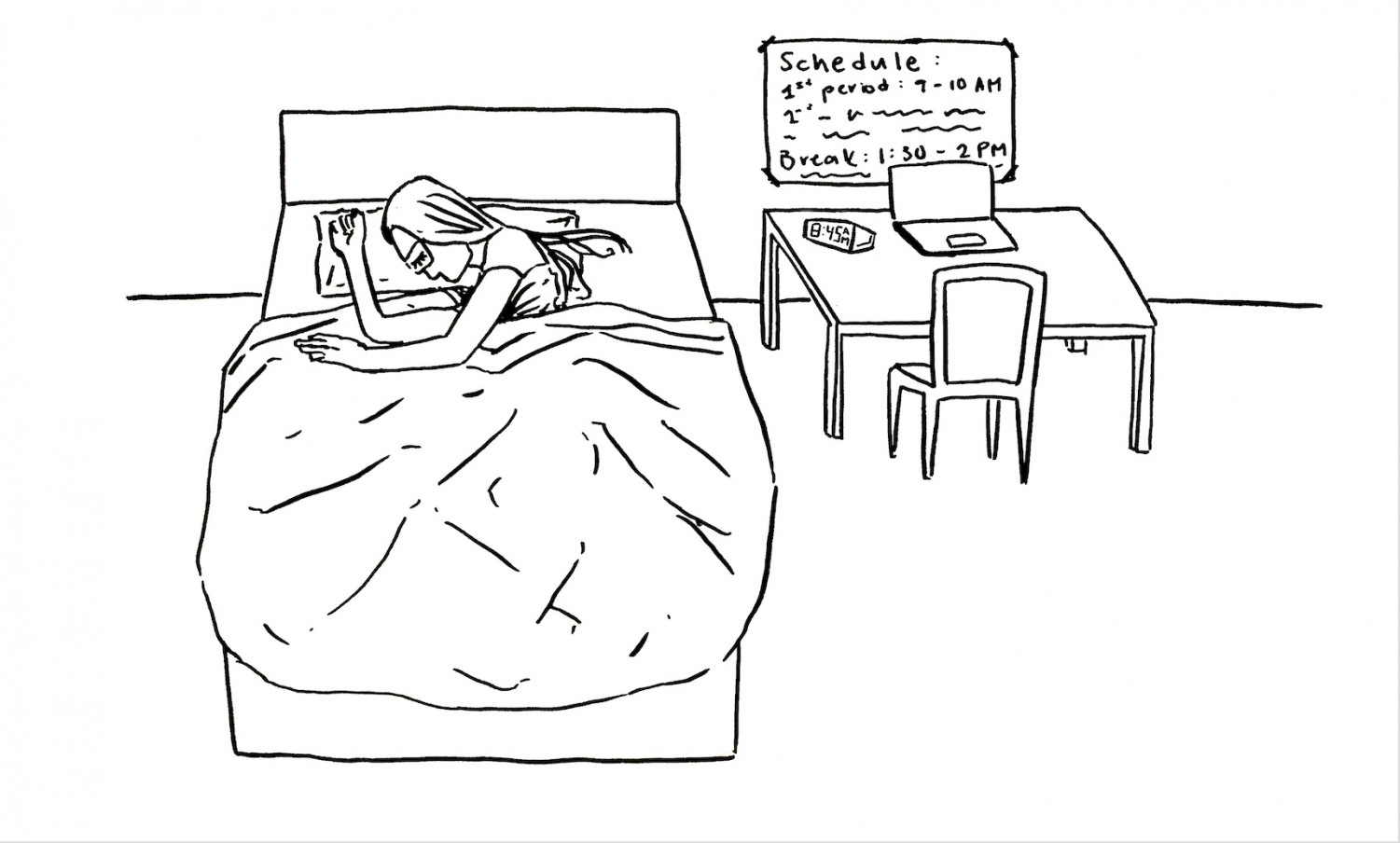
Kira Ratan is a senior at Masters and currently serves as Tower’s Editor-in-Chief. This is her fourth year on Tower; she’s previously served as Lead...


June 5, 2020
In time for the last month of school, the Masters School administration made several changes to the daily schedule in order to better accommodate the current remote learning model. These changes for the Upper School included shortened class periods, a later start time and earlier end time, more frequent breaks, and a longer lunch period.
When New York Governor Andrew Cuomo set in place a statewide stay-at-home order on March 23, all New York schools were required to close their campuses and transition to virtual classes. Masters had already made the decision to close its campus.
In addition to having to postpone commencement for graduating seniors and cancel all non-AP final exams, the administration was prepared to adjust the school’s schedule as well.
Associate Head of the Upper School Sara Thorn, who normally oversees the academic program and scheduling in the Upper School, was tasked with improving the academic environment for online learning.
“Mr. Newcomb and I had been receiving feedback from faculty and students, and our goal was to try and make sure that the year closes on as positive a note as possible,” Thorn said. “But, I was also doing all the normal work I’d be doing this time of year, which is all of the course requests and placements for next school year,” Thorn said.
The first feedback survey was sent out to students on April 7, one week after remote learning had begun. According to Thorn, a considerable portion of the feedback was directed towards flaws in the schedule as it pertained to remote learning. After that, one more survey was sent out to students, one to faculty and one to parents.
“I think we knew we were probably going to have to change [the schedule], but we didn’t want to make any changes without having experienced what it would be like for a while. So, when we sent out our surveys, we could see what changes people really needed and wanted,” Thorn said.
She said the most frequent request across the board asked about shortening class periods from 80 minutes, with 60 minutes being the “loudest and largest suggestion.” Other common requests included more breaks between periods, especially between the last two periods in the afternoon, and having a longer lunch period.
Like many other survey participants, sophomore Grace Radonis was in favor of making all of these changes to the schedule, both because she felt herself becoming less engaged due to and spending a greater amount of time in front of her screen.
“I think, although it worked when we were all physically at school, it turned out to be a bit much once we were at home. I felt like I was just sitting at my desk all day, glued to my screen,” Radonis said.
After receiving sufficient feedback, Thorn, Newcomb and Carnevale came together to put together a new schedule, hoping to fit in the majority of people’s requests. The team met with Head of School Laura Danforth, grade level deans and department chairs to present drafts and receive feedback. In the end, the schedule that ended up being chosen was a combination of several different options that were discussed.
“The survey results clarified what we were hearing consistently, so it was pretty easy to use the models I had already been thinking about, making sure we had opinions from the larger community and found a plan we hoped was going to work,” Thorn said.
Freshman Tyler Hack first expressed his concerns with the old schedule in the schoolwide survey, specifically touching on long class periods and few breaks in between. With the new schedule, Hack feels his needs have been met, and he is happy with the changes that have been made.
“The schedule shift has been very positive for me, especially the switch to sixty-minute periods with the thirty-minute breaks in between. I find that I can focus much better with these shortened periods,” Hack said.
Upper School English Teacher Paul West felt the transition to online classes was hard, especially with quick turnarounds for lesson plans for the rest of the school year. Although he was disappointed all the material couldn’t be covered with the schedule shift, he said the change overall benefited him.
“Everyone, including me, felt exhausted at the end of a day in front of the screen non-stop, no matter how well planned the time was. The new schedule has made my life easier because it’s made me have to let go of some of the things I was hoping to accomplish,” West said.
Overall, there has been positive feedback on the reformed schedule’s impacts from both students and faculty, who hoped to reduce their screen time in class and take breaks from online learning throughout the day.
“I think if the schedule hadn’t changed, I would have found myself losing motivation, but now with more time away from the screen, I have more energy to finish off the year on a good note,” Radonis said.

Kira Ratan is a senior at Masters and currently serves as Tower’s Editor-in-Chief. This is her fourth year on Tower; she’s previously served as Lead...